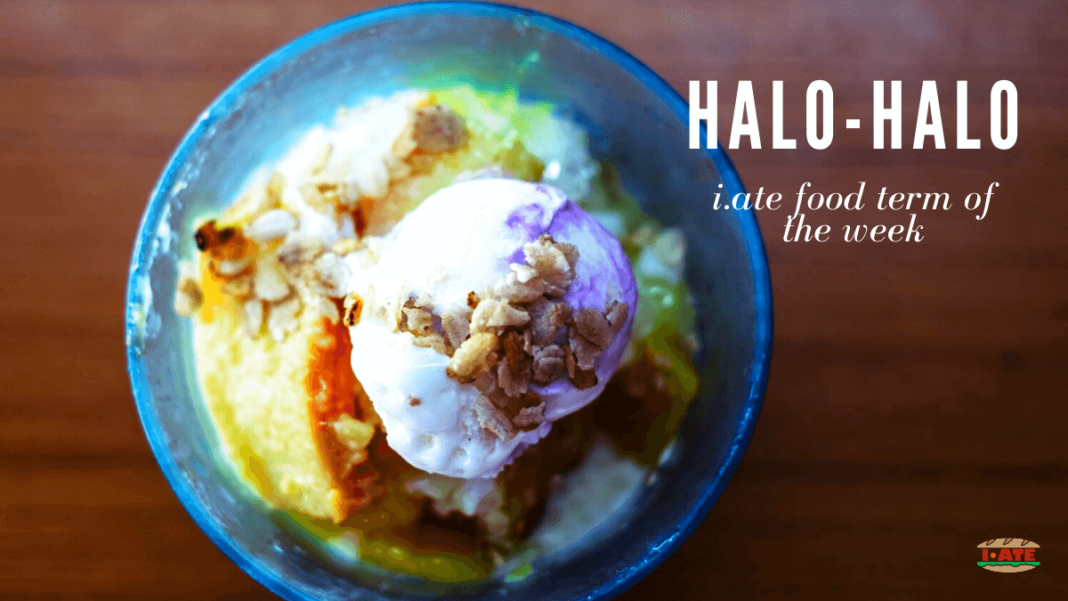Before there was ice cream, there was shaved ice: already the Roman Emperor Nero was reportedly fond of eating snow topped with fruit and honey. Over the centuries, shaved ice has remained a popular hot weather treat across the globe, whether granita and grattachecca in Italy, snowballs in the US, or raspado in Mexico. What these treats all have in common is that the ice is shaved – either by hand or with a specialised machine – and flavoured with fruit or syrup.
In Asia, shaved ice desserts are particularly popular and can be elaborate affairs, often coming with a myriad of toppings and in generous portions.
Halo-halo: Filipino shaved ice
In the Philippines, a shaved ice dessert known as halo-halo is served everywhere from street markets to five-star hotels. Technically, the grammatically correct name for this dish should be ‘haluhalo’ (from the Tagalog word halo, meaning ’to mix’), but it is more widely known as ‘halo-halo’. Although shaved ice is immensely popular nowadays, the country’s tropical climate meant that for most of its history, people had no access to ice. Ice first came to the Philippines via US ice trading ships in the 19th century. However, factory produced ice became widely available by 1902, when a large ice plant opened in Manila.

The most likely origin of halo-halo is that it was introduced to the Philippines by Japanese immigrants. The Japanese have been eating shaved ice from as early as the 7th century onwards. They call it kakigori (from the Japanese kaki, ‘to shave’ and kori or gori, ‘ice’). Kakigori consists of shaved ice sweetened with flavoured syrups and topped with red mung bean paste and fruit. The ice itself is often sourced from Japan’s mountain springs and there are even special techniques to freeze the ice so that it yields the finest shaves: kakigori ice is meant to have the texture of freshly fallen snow.
It was in the 1920s and 1930s that Japanese immigrants in the Philippines opened shops where they served a variant of kakigori consisting of mung bean paste topped with shaved ice, milk, and sugar. They called this dish ‘mongo-ya’, after the Tagalog word for mung beans, mongo. Mongo-ya proved immensely popular. When the original Japanese shops disappeared after World War II, the dish stayed. Over time, it was thoroughly nativised with the addition of ingredients such as coconut, banana, jackfruit, mango, tapioca pearls, agar jelly, leche flan, sweetened beans, sweetened mashed ube (purple yam), and ice cream (often ube flavoured). Halo-halo is traditionally garnished with toasted rice flakes, although in practice it tends to be garnished with one’s favourite breakfast cereal. While the resulting dessert is certainly not for food minimalists, the richness of halo-halo offers contrasting colours, tastes, and textures with every bite.
Shaved ice in Asia
Shaved ice is found in some form in almost every country in East and Southeast Asia. Two of the more well-known versions are baobing and bingsu.

The Chinese have been eating shaved ice for centuries. Here it is called baobing (from Mandarin bao ‘shaved’ and bing ‘ice’). Baobing is served in big sharing portions and is topped with seasonal fruit, tapioca pearls, mung beans, sweet jellies, flavoured syrups, and condensed milk.

In Korea, shaved ice is called patbingsu, (from pat, ‘red mung bean’ and bingsu, ’shaved ice’) or simply bingsu. Seeing as red mung bean paste is a Japanese culinary mainstay, patbingsu may have also come from Japan to Korea in the early 20th century. However, historical sources indicate that Koreans ate bowls of shaved ice topped with fruit as far back as the 14th century. Popular bingsu toppings are small rice cakes, milk, green tea, and coffee.
References
From Home to Rome. 2019. A Roman Summer Tradition: the “grattachecca”. [ONLINE]. Available at: https://www.fromhometorome.com/roman-summer-tradition-grattachecca-drink/ [Accessed 13/07/2020].
The Korea Herald. 2010. Snowy Delights and Variations on Bingsu. [ONLINE] Available at: http://www.koreaherald.com/view.php?ud=20100812000473 [Accessed 13/07/2020].
The Woks of Life. 2019. Baobing Chinese Shaved Ice. [ONLINE] Available at: https://thewoksoflife.com/baobing-chinese-shaved-ice/ [Accessed 13/07/2020].
Eater. 2018. Shave Ice, Explained. [ONLINE] Available at: https://www.eater.com/2018/5/24/17376180/shave-ice-shaved-ice-kakigori-dessert-bao-bing-halo-halo [Accessed 13/07/2020].
Inquirer. 2012. Japanese origins of the Philippine ‘halo-halo’. [ONLINE] Available at: https://opinion.inquirer.net/35790/japanese-origins-of-the-philippine-halo-halo [Accessed 13/07/2020].
The New York Times. 2018. An Avalanche of Japanese Shave Ice. [ONLINE] Available at: https://www.nytimes.com/2018/09/17/dining/kakigori-japanese-shave-ice.html [Accessed 13/07/2020].
Grub Street. 2018. Kakigori Is an Ancient Frozen Japanese Specialty – Now It’s America’s Hottest Dessert, Too. [ONLINE] Available at: https://www.grubstreet.com/2018/03/kakigori-pastry-chefs.html [Accessed 13/07/2020].
Seoul Eats. 2011. The Origin of Patbingsu. [ONLINE] Available at: https://www.seouleats.com/2011/05/origin-of-patbingsu.html [Accessed 13/07/2020].
Recipes
The Little Epicurean. 2017. Halo-Halo. [Accessed 13/07/2020]
Love and Food Foreva. 2016. HALO-HALO (FILIPINO DESSERT). [Accessed 13/07/2020]
Foxy Folksy. 2019. Halo-Halo Recipe. [Accessed 13/07/2020]

Written by Janna Mack. From Luxembourg, she has degrees in Linguistics, Education, and Translation from Glasgow University.


